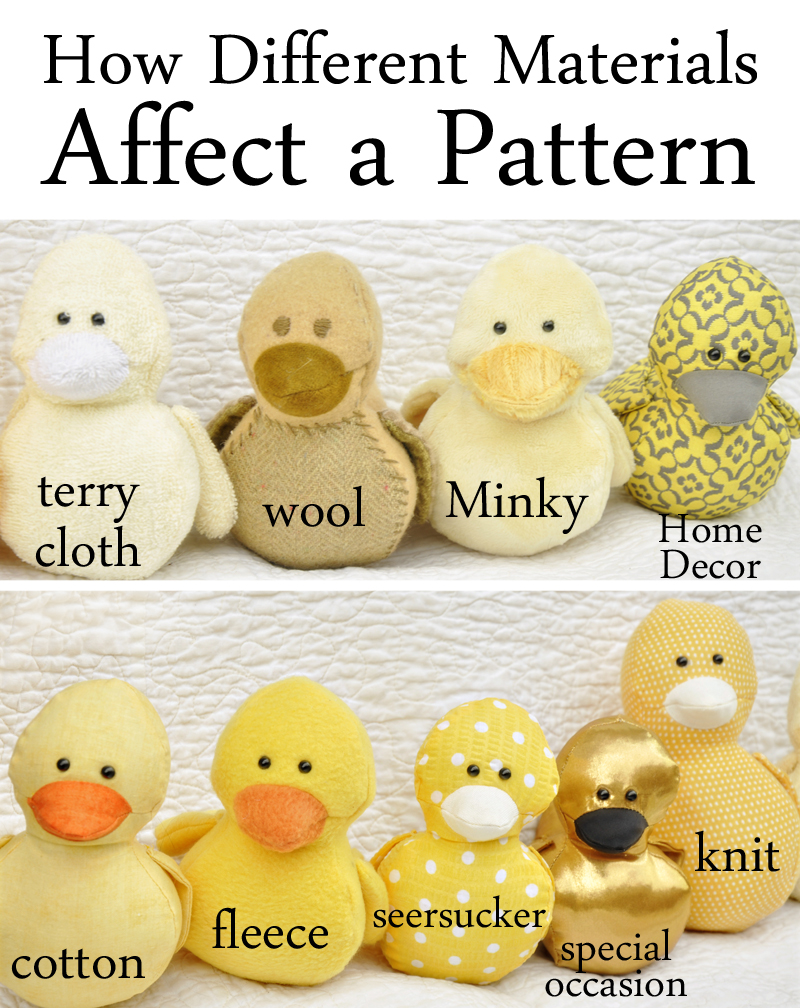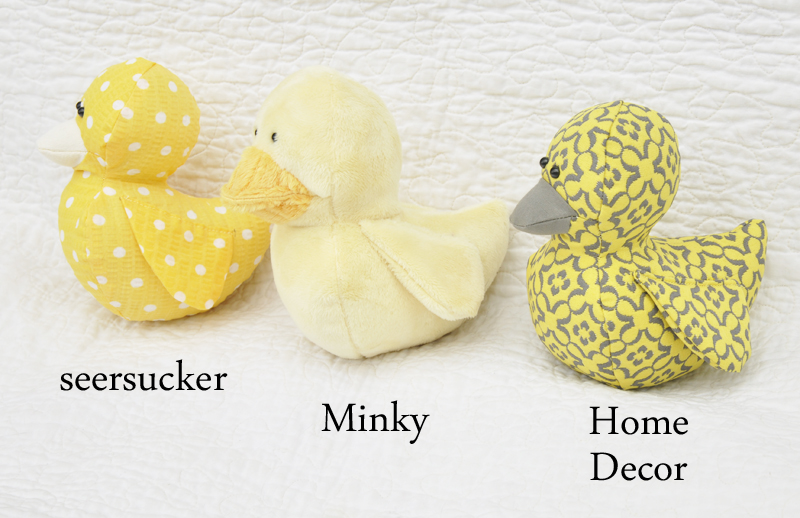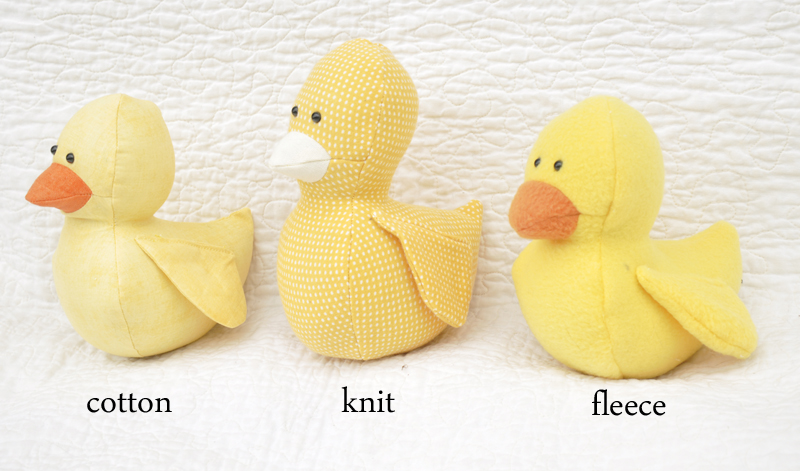I recently made up quite a few toy ducks for The Little Yellow Duck Project. I’ve been wanting to do a little experiment for a while now, and finally had a reason to sew one pattern over and over.
I know that when I make up a pattern in a different fabric than normal it looks a bit different. But how different is it? Which materials make the biggest change and how can I plan around them?
To test out my questions I took my Darling Duckling pattern and sewed it up in a variety of fabrics. They were all sewn by me, on the same day, using the same machine. The only change was the material I used. Here’s what I learned:
1. Change in General Style. This one is a bit obvious, but I really had fun trying to take the exact same pattern and make it for completely different style preferences. From the sleek and modern Golden Goose made with special occasion fabrics to the folk artsy wool duck- the style of the pattern definitely changed with different fabrics. That made me happy- when picking out a pattern to use for gifts, it’s great to know it can appeal to lots of different people.
2. Shape. Wow! This is the one I was most curious about, and having all the different ducks right next to each other really helped me see what was going on. Obviously we know that fabric with a bit of stretch will act differently than a fabric with no stretch at all, especially once we stuff an item full of fiber fill. But even the two super stretchy fabrics, Minky and knit, ended up very different. On both fabrics, if you pull the material one way (side to side) it will be super stretchy, but if you pull the other (top to bottom) there will be little stretch. On the knit I put the stretchy side going up and down, which made the duck way taller than any other. For the Minky I had the stretchy side going side to side- check out how much fatter that guy’s neck is compared to the others. I knew there would be differences, but I never realized how different the pattern would turn out.
It was also interesting to see how much larger the duck looked when it was made up in Minky. I think the furry texture added a bit of weight- kind of like how a dog looks much bigger before getting his fur shaved down.
3. Texture. Of course the texture of the material changes- the Minky is super soft, the home decor fabric wasn’t. That’s easy to tell from the fabric while it’s still on the bolt. What I really learned was how much of a difference the stretch of the fabric made in the texture of the stuffed animal. Ducks made with fabrics with a bit of stretch were more snugly because the fabric lets you mush it around. Fabrics without stretch held their shape better and looked more like the official pattern, but didn’t feel quite as huggable (yes, I did just make up that word). If I were making a toy to sit on a shelf as decoration (I have a lot of adults who make up our Dalton the Dragon pattern to sit on a bookshelf, for example), I’d definitely pick something with little or no stretch so the animal would look just like the pattern was designed to look. But if I wanted to make a toy that would be hugged and loved, I think I’d pick something with a bit of stretch to it.
In the end, all the fabrics turned out great. That’s the great thing about making toys- you can get away with changes in shape and size and all it does is add character. But I am definitely glad to understand a little more specifically what different fabrics will do to shape and size so that next time I need something specific, I’ll know where to look.



This is an interesting post. Thanks for doing it. It would be interesting to take the minky and knit and cut them with the stretch going the opposite direction of what you did here. I’m curious what they would do if cut on the bias?!?!?!
oh… cut on the bias! I am so curious!